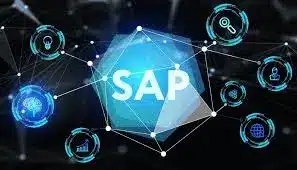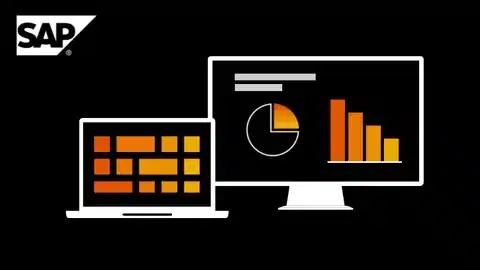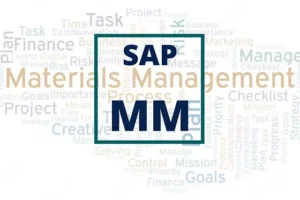Top 20 SAP FICO Interview Questions & Answers for 2025
If you are preparing for an SAP FICO interview in 2025, then don’t worry, here we provide you with the list of the top 20 SAP FICO interview questions and Answers for 2025, which will help you to succeed. If you read all these interview questions and answers for SAP FICO, you will get a great understanding of key concepts, and you can also stand out in your next interview.
1. What is SAP FICO?
Table of Contents
ToggleSAP FICO stands for Financial Accounting and Controlling. The FI controls external accounting, which includes balance sheets and profit & loss statements. On the other hand, CO focuses on internal cost tracking, budgeting, and performance analysis.
2. What is a Posting Key?
A Posting Key is a two-digit numerical code used to control and determine the transaction type documented in the line item. It helps determine the account types, types of posting (debit or credit), and the field status of a transaction
3. What is the Chart of Accounts (COA)?
COA is a structured list of all general ledger accounts that is used by most of the company. The chart of accounts helps in organizing financial transactions and also provides consistency in financial reporting.
4. What is the purpose of Asset Accounting (AA)?
It helps in managing the company’s fixed assets, which include asset acquisition, depreciation, and retirement. It also provides accurate asset valuation and compliance with the accounting standards
5. What is the difference between FI and CO?
- Financial Accounting: It helps in external reporting and also focuses on balance sheets and profit & loss statements
- Controlling: CO focuses on internal reporting, tracking costs, and performance analysis.
6. What is a Fiscal Year Variant?
Basically, it defines the structure of the financial year, which includes the number of periods and also special periods. It specifies how financial periods are grouped and reported.
7. What is the role of the General Ledger (GL)?
The General Ledger (GL) is the main storage where all financial transactions are recorded. It guarantees that financial reporting is accurate and complete by consolidating data from different modules.
8. What is the purpose of the Document Splitting feature?
Document Splitting makes it possible to automatically create several line items inside a document, which in turn assures the accuracy of financial statements and compliance with legal obligations.
9. What is the role of the Controlling Area?
The Controlling Area is a SAP organizational unit that denotes a closed system for cost accounting. It provides the capability for cost monitoring and controlling throughout the different company codes.
10. What is the purpose of the Profitability Analysis (CO-PA) module?
The CO-PA module supports the evaluation of profitability for various market segments by assuming the revenues and costs related to different dimensions like products, customers, or regions.
11. What is the role of the Cost Element in CO?
Cost or revenue of a certain category is represented, which lets you easily classify, monitor and control costs and revenues within the controlling module.
12. What is the purpose of the SAP FICO integration with other modules?
In case you connect SAP FICO with other modules such as SAP MM and SD, there will be a smooth data transfer throughout the entire system, which will lead not only to better financial reporting but also to more accurate and faster reporting.
13. How do you handle year-end closing in SAP FICO?
The activities involved are mainly account reconciliations, adjustments, and the generation of financial statements. Practice adds to the importance that revenue or expense reporting is in alignment to the accounting standards that govern them.
14. What is the difference between Direct and Indirect Posting?
- Direct Posting: The recorded transactions directly hit the General Ledger.
- Indirect Posting: The recorded transactions first hit the sub-ledgers (such as Accounts Payable or Accounts Receivable) before being reflected in the General Ledger.
15. What is the purpose of the Company Code in SAP FICO?
The Company Code is in charge of the generation of financial reports like Profit and Loss Statements, Balance Sheets, etc. It is the smallest unit of organization for which all accounts can be created in full.
16. How many Chart of Accounts can a company code have?
A company code can only have one Chart of Accounts assigned to it. However, it may also have multiple country-specific charts of accounts assigned to satisfy legal requirements.
17. How many currencies can you configure for a Company Code?
You can configure three currencies for a Company Code:
- One local currency
- Two parallel currencies
18. What is the role of the Field Status Group?
The Field Status Group defines which fields are required, optional, or suppressed when posting a transaction. It also helps in controlling the data entry process and provides consistency in financial postings.
19. What is the purpose of the Special Purpose Ledger?
It is basically used for specific financial data reporting, but not standard for all transactions. It also allows for customized reporting requirements that are not covered by the standard SAP ledgers.
20. What is the role of the Business Area in SAP FICO?
It defines separate areas of operations or responsibilities within an organization. Business Ares in SAP FICO also helps in segmenting financial data for internal reporting purposes.
Conclusion
You will definitely succeed in your next interview if you handle these SAP FICO interview questions like a pro. Keep in mind that practice and deep comprehension of the concepts are the most important things to have for SAP FICO roles.
Nextnow, a training center that provides SAP training, consulting services, and SAP Certification, would be a wise choice if you’d like to enhance your SAP FICO skills or get professional support.
FAQs
Q1: Is SAP FICO difficult to learn for beginners?
No. If you deeply understand the basic accounting and finance concepts, then SAP FICO becomes very easy for you. Basically, SAP FICO is about understanding how accounting processes work inside the SAP system rather than just memorizing terms. If you regularly practice or watch demo training sessions, then it helps a lot to be ready for an interview.
Q2: Do I need a finance background to learn SAP FICO?
If your background is from commerce, accounting, or finance the it is very helpful, but to learn SAP FICO, it is not mandatory. Many students whose background is technical or management also learn SAP FICO successfully. All you need is to be comfortable with financial terms and logic.
Q3: How long does it take to learn SAP FICO?
It takes around 2 to 3 months to complete the basics with proper practice. If you want to learn more deeply, then it may take 4 to 6 months, depending on your pace and training resources.
Q4: What are the career options after learning SAP FICO?
After completing the SAP FICO training, you can start your career as a SAP FICO Consultant, Support Analyst, End User, or Junior Consultant. If you have experience, then you can move into a senior role like SAP Functional Consultant or Project Manager.
Dont Hesitate To Contact Us
Recent Post








